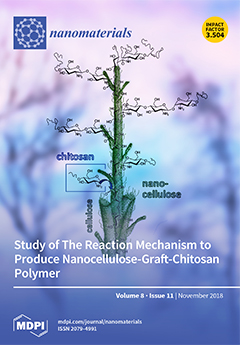To develop promising adsorbent candidates for adsorptive denitrogenation, we screened the adsorption of NO, NO
2, and NH
3 in 19 M-HKUST-1 (M = Be, Fe, Ni, Cr, Co, Cu, V, Zn, Mo, Mn, W, Sn, Ti, Cd, Mg, Sc, Ca, Sr,
[...] Read more.
To develop promising adsorbent candidates for adsorptive denitrogenation, we screened the adsorption of NO, NO
2, and NH
3 in 19 M-HKUST-1 (M = Be, Fe, Ni, Cr, Co, Cu, V, Zn, Mo, Mn, W, Sn, Ti, Cd, Mg, Sc, Ca, Sr, and Ba) systematically using first-principle calculations. Of these, four variants of M-HKUST-1 (M = Ni, Co, V, and Sc) yield more negative adsorption Gibbs free energy ΔG
ads than the original Cu-HKUST-1 for three adsorbates, suggesting stronger adsorbate binding. Ti-HKUST-1, Sc-HKUST-1, and Be-HKUST-1 are predicted to have the largest NO, NO
2, and NH
3 adsorption energies within the screened M-HKUST-1 series, respectively. With the one exception of NO
2 dissociation on V-HKUST-1, dissociative adsorption of NO, NO
2, and NH
3 molecules on the other considered M-HKUST-1 is energetically less favorable than molecular adsorption thermodynamically. The barrier calculations show that the dissociation is difficult to occur on Cu-HKUST-1 kinetically due to the very large dissociation barrier. Electronic analysis is provided to explain the bond nature between the adsorbates and M-HKUST-1. Note that the isostructural substitution of Cu to the other metals is a major simplification of the system, representing the ideal situation; however, the present study provides interesting targets for experimental synthesis and testing.
Full article






